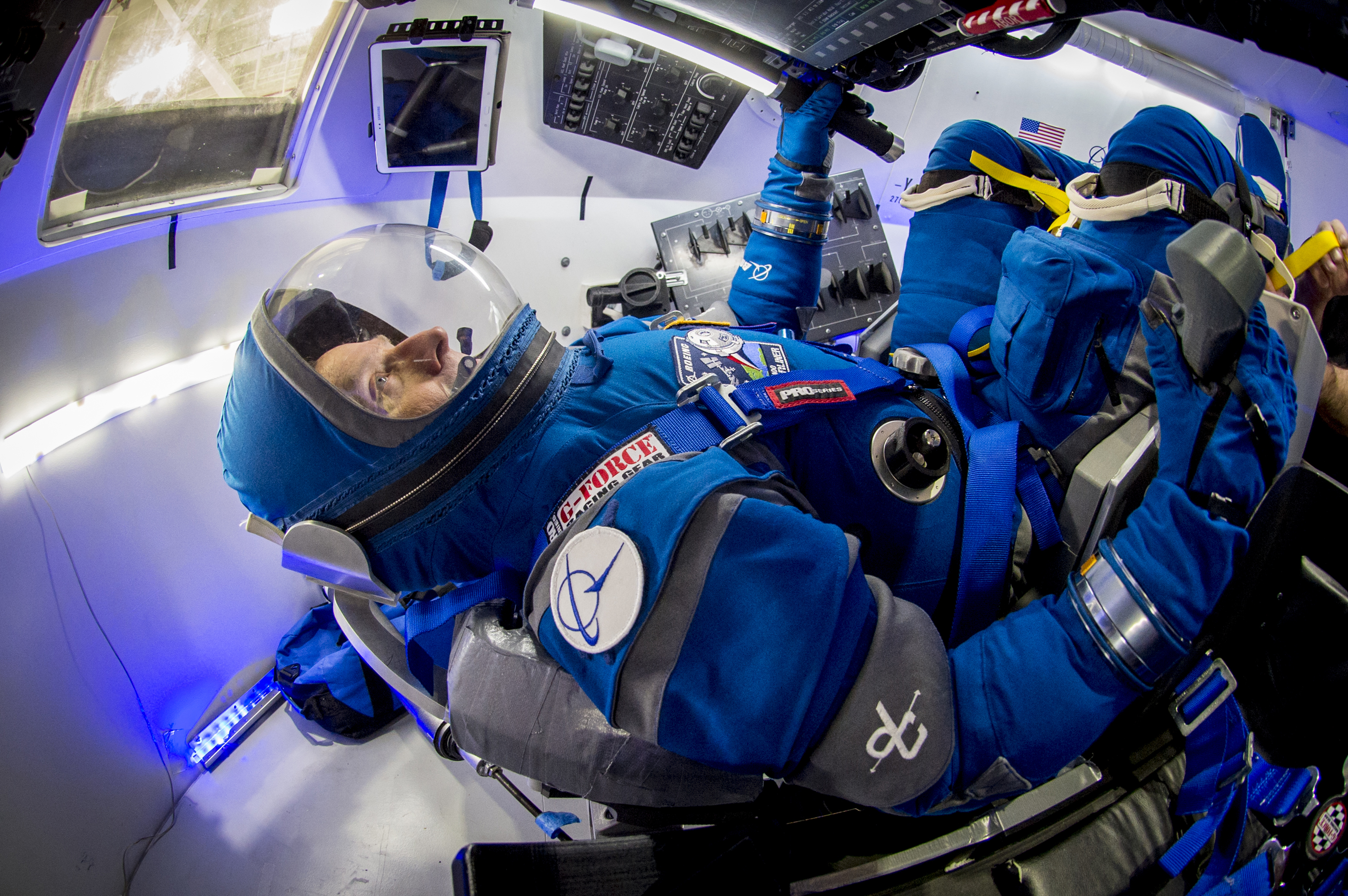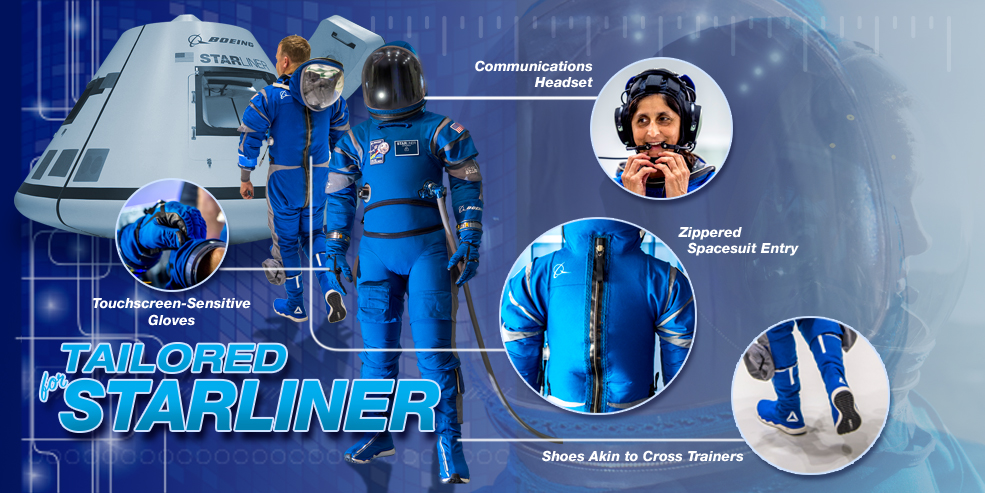Boeing Unveils New Spacesuits for Starliner Astronaut Taxi (Photos)

The NASA astronauts who fly aboard Boeing's new spaceship will wear sleek, blue suits that are lighter, simpler and more comfortable than the bulky orange gear of the space shuttle era, company representatives said.
Unveiled today (Jan. 25), the new "Boeing Blue" spacesuits for the Starliner capsule weigh about 20 lbs. (9 kilograms) each with all of their accessories, compared to 30 lbs. (13.6 kg) for the old space shuttle suits, NASA officials said.
Other advances include touch-screen-sensitive gloves, more-flexible material and soft helmets that are incorporated into the suit (rather than the hard, detachable helmets of the shuttle era). [See photos of the new Boeing spacesuits]
"It is a lot lighter, more formfitting, and it's simpler, which is always a good thing," NASA astronaut Eric Boe said in a statement. "Complicated systems have more ways they can break, so simple is better on something like this."
Boe is one of four NASA astronauts currently training to fly aboard the Starliner and SpaceX's Dragon capsule, which the two companies are developing to provide taxi services to and from the International Space Station (ISS). Both vehicles should start flying crewed missions in the next year or two, NASA officials have said.
The Boeing Blue suit, and the one that SpaceX develops, will help keep astronauts safe in the event of an emergency during trips to and from orbit. The suits are not designed for spacewalks; the large, bulky "extravehicular mobility units" that astronauts use for this latter purpose are already aboard the ISS.
"The spacesuit acts as the emergency backup to the spacecraft's redundant life-support systems," Richard Watson, subsystem manager for spacesuits in NASA's Commercial Crew Program, said in the same statement. "If everything goes perfectly on a mission, then you don't need a spacesuit. It's like having a fire extinguisher close by in the cockpit. You need it to be effective if it is needed."
Breaking space news, the latest updates on rocket launches, skywatching events and more!
Since the space shuttles' retirement in July 2011, NASA has relied on Russian Soyuz spacecraft to get American astronauts to and from orbit, at a cost of about $70 million per seat. Starliner and Dragon will end this foreign dependence, if all goes according to plan.
That plan is getting closer and closer to reality, said former NASA astronaut Chris Ferguson, who is now director of crew and mission systems for Boeing.
"To me, it's a very tangible sign that we are really moving forward and we are a lot closer than we've been," Ferguson said of today's spacesuit unveiling. "The next time we pull all this together, it might be when astronauts are climbing into the actual spacecraft."
Follow Mike Wall on Twitter @michaeldwall and Google+. Follow us @Spacedotcom, Facebook or Google+. Originally published on Space.com.
Join our Space Forums to keep talking space on the latest missions, night sky and more! And if you have a news tip, correction or comment, let us know at: community@space.com.

Michael Wall is a Senior Space Writer with Space.com and joined the team in 2010. He primarily covers exoplanets, spaceflight and military space, but has been known to dabble in the space art beat. His book about the search for alien life, "Out There," was published on Nov. 13, 2018. Before becoming a science writer, Michael worked as a herpetologist and wildlife biologist. He has a Ph.D. in evolutionary biology from the University of Sydney, Australia, a bachelor's degree from the University of Arizona, and a graduate certificate in science writing from the University of California, Santa Cruz. To find out what his latest project is, you can follow Michael on Twitter.


